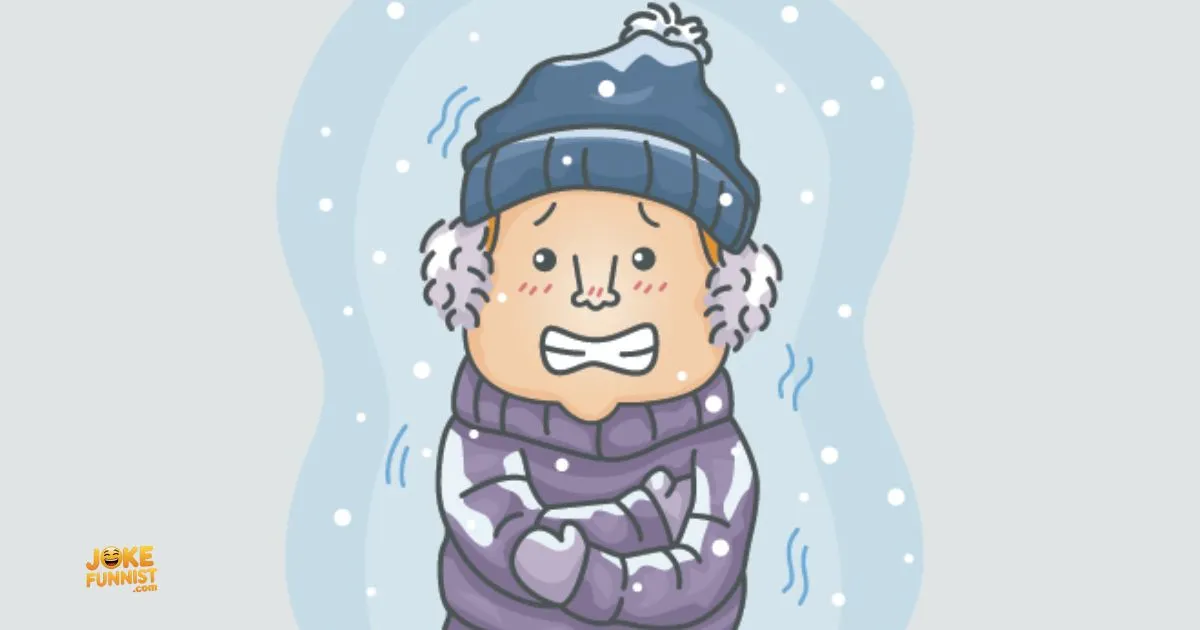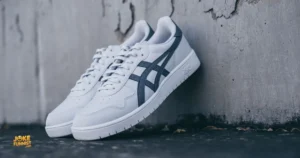“Don’t get cold feet chill out with these frosty puns guaranteed to warm your funny bone!”
Puns are a universal way to spark laughter, and cold-themed puns add a frosty twist that’s impossible to resist. When it’s a playful jab about snowmen or a clever remark about icy beverages, cold puns have a unique charm that brings a little humor to the chilliest days.
Why are cold puns so appealing? It’s their ability to blend wit with relatability. When you’re joking about the weather or sharing a laugh over frozen treats, these puns remind us not to take life too seriously even when it’s below freezing.
From icy idioms to frosty wordplay, this collection of cold puns is perfect for breaking the ice at parties, warming up a conversation, or simply chilling out with a good laugh. Dive into these snow-tastic jokes and enjoy a flurry of giggles!
Chillingly Best Cold Puns That Will Ice Your Day
- Introduction: Why cold puns are a cool way to break the ice.
- The charm of temperature-based humor.
- Examples of punny cold-weather jokes.
- How cold puns work across various contexts.
- Their role in lightening up frosty conversations.
- “Ice to meet you” and other classic cold puns.
- Turning weather talk into witty exchanges.
- Puns about frosty mornings and freezing nights.
- Why cold puns can warm hearts.
- Using cold puns to make mundane weather chats fun.
- Seasonal puns for winter-lovers.
- Expanding cold jokes to include icy foods or drinks.
- Keeping cold puns lighthearted and creative.
- When and where to use cold puns effectively.
- Avoiding overuse or cheesiness in icy humor.
- Conclusion: Cold puns are a surefire way to add humor to any chilly day.
Frosty One-Liners That Will Snowball Your Laughter
- Introduction: What makes frosty one-liners unique and funny.
- The quick wit required for single-line humor.
- Examples: “Snow joke, but I’m flaking out!”
- How to craft a perfect frosty one-liner.
- Seasonal themes: snowmen, icicles, and frost.
- Keeping one-liners simple yet impactful.
- Delivery tips to maximize laughter.
- The importance of timing in one-liners.
- Using frosty one-liners to lighten serious conversations.
- Making them relatable and fun for everyone.
- When and where to throw in a frosty zinger.
- Expanding one-liners to playful banter.
- Creating your own frosty punchlines.
- Examples of snow-related quick quips.
- Ensuring humor lands without being misunderstood.
- Conclusion: Frosty one-liners are perfect for delivering quick, memorable laughs.
Read more: Arm Puns That Flex Your funny Side
Q&A Puns: Why Did the Snowman Break Up with His Girlfriend?
- Introduction: The appeal of Q&A-style jokes.
- Why question-and-answer humor works well in conversations.
- Example puns about snowmen, frost, and icicles.
- Structuring a joke for maximum impact.
- Audience-friendly Q&A cold puns.
- Seasonal themes in Q&A humor.
- How to guess punchlines for added fun.
- Using Q&A puns in playful banter.
- Ice-breaker jokes: literally and figuratively.
- How Q&A puns encourage interaction.
- Best settings for sharing cold Q&A jokes.
- Turning winter facts into humorous Q&A setups.
- How to keep Q&A puns lighthearted and fun.
- Balancing cleverness with accessibility.
- Examples of laugh-inducing Q&A puns.
- Conclusion: Q&A cold puns bring humor to any chilly interaction.
Double Entendre Delight: The Icicle Asked the Glacier,
- Introduction: What is double entendre, and why is it funny?
- How cold themes lend themselves to layered meanings.
- Examples of icy double entendres for humor enthusiasts.
- Crafting subtle jokes with chilly undertones.
- Balancing cleverness and clarity in double entendre.
- Why these jokes add intrigue to conversations.
- Cold-themed wordplay that’s not too on-the-nose.
- Examples of playful icy banter.
- Where to use double entendre effectively.
- How to avoid confusion or misinterpretation.
- Adding charm to cold puns with subtle humor.
- Encouraging shared laughter with clever setups.
- Turning weather talk into witty wordplay.
- Memorable cold-themed double entendre jokes.
- Delivery tips for maximum impact.
- Conclusion: Double entendre adds sophistication to frosty humor.
Idiom Icy Humor: When Life Gives You Snow, Make Snow Cones!
- Introduction: Why idioms are ripe for pun-filled humor.
- Transforming common phrases into icy jokes.
- Examples of idiom-based cold puns.
- “Cold shoulder” and other frigid idioms.
- Using idioms to create relatable winter humor.
- The appeal of reimagining clichés with a frosty twist.
- How to make idioms relevant in seasonal contexts.
- Why idiom puns work well in casual conversations.
- Crafting original idiom puns for added charm.
- The role of familiarity in making idiom puns land.
- Seasonal spins on well-known idioms.
- Adding creative twists for unique humor.
- Where to share idiom-based jokes.
- The balance between clever and overdone.
- Using idioms as ice-breakers in social settings.
- Conclusion: Idiom puns add depth and wit to frosty humor.
Juxtaposition Jokes: Why Did the Snowman Call His Dog Frost?
- Introduction: What makes juxtaposition jokes so humorous?
- The power of contrasting ideas in cold humor.
- Using absurd scenarios to create memorable laughs.
- Examples of frosty juxtaposition jokes.
- Why combining unexpected elements enhances comedy.
- Balancing cleverness and absurdity in jokes.
- Seasonal themes for winter-inspired juxtapositions.
- Relatable settings for juxtaposition-based humor.
- The appeal of “chilly” contrasts in everyday life.
- Crafting your own jokes with opposing ideas.
- When to use juxtaposition humor in social settings.
- Common pitfalls: When contrasts don’t quite land.
- How to use physical cold elements in setups.
- Adding a relatable touch to unusual combinations.
- Examples: Animals, objects, and icy puns combined.
- Conclusion: Juxtaposition jokes add depth and surprise to cold puns.
Pun-tastic Names: Meet Chilly McFreeze, the Coolest Ice Sculptor in Town
- Introduction: The charm of pun-based character names.
- Why names are perfect vehicles for frosty humor.
- Classic examples like “Jack Frost” or “Snowy McChill.”
- Creating original icy names for a fresh spin.
- How names connect with seasonal or weather themes.
- Adding personality through playful naming.
- Using pun-tastic names in storytelling or jokes.
- Examples of food-inspired cold names (e.g., Frosty Creamsicle).
- Turning everyday objects into character names.
- The role of context in making names humorous.
- How to balance humor and clarity in naming.
- Playful examples for fictional winter personas.
- Collaborative name-creation for fun group activities.
- Avoiding overcomplicated or forced names.
- Example: Naming a snowman “Blizzard Bob.”
- Conclusion: Pun-based names are a fun way to personalize cold humor.
Spoonerisms Shenanigans: Brr, It’s Cold Outside! Oops, I Mean, Crr, It’s Bold Outside!
- Introduction: The clever humor behind spoonerisms.
- How spoonerisms work as a playful linguistic twist.
- Examples of icy spoonerisms for humor.
- Crafting your own winter-themed spoonerisms.
- Seasonal elements that lend themselves to this wordplay.
- Why spoonerisms appeal to audiences of all ages.
- Common pitfalls in executing spoonerism jokes.
- Adding creativity to spoonerism setups.
- Examples: Frosty flips like “flurry and snowy” to “slurry and no-wy.”
- Using spoonerisms in storytelling for comedic effect.
- Where and when spoonerisms work best in conversation.
- Avoiding overcomplication in spoonerisms.
- Collaborative spoonerism games for group fun.
- Why spoonerisms can feel fresh and unexpected.
- Examples: “Chill thrills” to “Thrill chills.”
- Conclusion: Spoonerisms provide unique, frosty humor through creative wordplay.
Tom Swifties Chill Edition: “I’m Freezing,” Said Tom Coldly
- Introduction: The charm of adverb-focused Tom Swifties.
- How cold themes add a frosty twist to this wordplay style.
- Examples: “This blizzard is relentless,” Tom said frostily.
- The structure of a classic Tom Swifty.
- Seasonal elements that fit well with Tom Swifties.
- Crafting original Swifties with cold-weather vocabulary.
- Why Tom Swifties are clever and memorable.
- Delivery tips for maximum humor impact.
- Using Swifties in casual conversation.
- Expanding the formula to include snowy and icy terms.
- Common pitfalls in crafting cold Swifties.
- How Swifties can inspire creativity in group settings.
- Balancing cleverness and simplicity in wordplay.
- Examples: “The thermometer broke,” Tom said icily.
- Seasonal activities that inspire more Swifties.
- Conclusion: Tom Swifties bring clever, frosty wordplay to chilly conversations.
Oxymoronic Puns: The Hot Cocoa Was So Cold, It Gave Me Brain Freeze!
- Introduction: The humor in contradictions.
- Why oxymorons are an effective source of jokes.
- Examples: “Warm snowball fights” or “cold fire pits.”
- How to craft cold-themed oxymoronic puns.
- The role of absurdity in oxymorons.
- Using relatable scenarios for oxymoronic humor.
- Seasonal themes that lend themselves to contradictions.
- Expanding on classic oxymorons like “icy hot.”
- Adding a frosty twist to everyday phrases.
- The charm of mixing opposites in humor.
- Common settings for using oxymoronic puns.
- Encouraging creativity with group oxymoron games.
- Why contradictory humor feels fresh and surprising.
- Examples: “Frozen warmth” or “silent snowstorm.”
- Crafting your own oxymoronic puns.
- Conclusion: Oxymorons bring a paradoxical twist to icy humor.
Recursive Humor: Why Did the Snowman Refuse to Melt? Because He Had a Cold Heart!
- Introduction: The layered humor of recursive jokes.
- What makes recursive humor unique and clever.
- Examples: Jokes referencing themselves or other jokes.
- Crafting recursive jokes with cold-weather themes.
- Why recursion works well in icy humor.
- Adding cleverness through self-referential setups.
- Relatable examples for snowy days.
- Using recursion to engage the audience.
- Where and when recursive jokes land best.
- Examples of snowmen or frost-themed recursive jokes.
- Avoiding overly complex setups for recursion.
- Expanding on recursive themes with group humor.
- Why self-referential humor resonates.
- Classic examples of recursive cold puns.
- Encouraging creativity in recursive setups.
- Conclusion: Recursive humor loops back to keep laughter fresh.
Clichés with a Twist: Feeling Cold as Ice, Baby!
- Introduction: The appeal of revamping classic clichés.
- Adding originality to tired phrases.
- Examples: “Cold as ice” with witty twists.
- How clichés can be adapted for frosty humor.
- The role of familiarity in cliché-based jokes.
- Why twists on clichés are surprising and funny.
- Crafting your own clichés with seasonal elements.
- Expanding common phrases with icy details.
- Examples: “Snow joke, but it’s freezing out!”
- Avoiding overuse or cheesiness in clichés.
- Why clichés work well in casual conversations.
- Relatable examples for everyday use.
- Using clichés to create instant connections.
- The balance between clever and forced twists.
- Examples: “Cool as a snowman in a snowstorm.”
- Conclusion: Twists on clichés keep icy humor fresh and engaging.
Wordplay Wonderland: Ice to Meet You, Cold Puns at Your Service!
- Introduction: The creative power of wordplay.
- Why cold themes lend themselves to clever language.
- Examples of frosty puns for every occasion.
- How to craft original cold-themed wordplay.
- The versatility of puns in winter conversations.
- Relatable themes like snow, ice, and frost.
- Keeping wordplay lighthearted and fun.
- Why wordplay appeals to all ages.
- Seasonal jokes that brighten winter days.
- Expanding wordplay into storytelling.
- Examples: “Ice to see you” or “Snow doubt about it.”
- Encouraging creativity with wordplay games.
- Balancing cleverness and accessibility.
- How to make cold wordplay memorable.
- Examples of standout cold puns.
- Conclusion: Wordplay turns chilly conversations into warm laughter.
Key Insight:
1.What makes cold puns so funny?
Cold puns are often funny because they juxtapose chilly themes with warm humor, creating a delightful contrast that catches listeners off guard.
2.How can I use cold puns in conversations?
Cold puns are great for breaking the ice, lightening the mood in winter-themed gatherings, or adding a playful twist to discussions about weather or food.
3.Are cold puns family-friendly?
Absolutely! Most cold puns are lighthearted and suitable for audiences of all ages, making them perfect for family fun.
4.What’s a classic cold pun to start with?
A classic example is, “Why don’t snowmen ever fight? Because they just let it slide.”
5.How can I come up with my own cold puns?
Focus on winter-related words like “ice,” “snow,” and “frost,” then find ways to pair them with humorous phrases or scenarios.
Final Thought:
Cold puns are more than just jokes they’re a way to brighten up even the frostiest days. Their versatility makes them perfect for sharing laughs with friends, family, and even strangers in casual conversation.
When you’re embracing the chill of winter or cooling off in the summer heat, a good cold pun is always in season. So, go ahead and share these icy gems you might just become the coolest punster around!

A dynamic author with a flair for clever wordplay and engaging humor.











